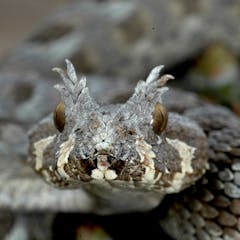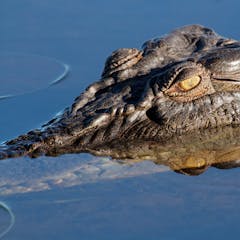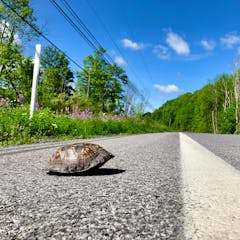
Articles on Reptiles
Displaying 1 - 20 of 94 articles

Ichthyosaurs were the last giant reptiles to rule our oceans.

There are 401 indigenous terrestrial reptiles in South Africa.

We need every tool at our disposal to stop feral cats and foxes from decimating Australia’s incredible wildlife after fires. Artificial refuges show promise.

A lizard fossil that was thought to be the best preserved ever has turned out to have fake skin.

Our mammal ancestors evolved to compete with dinosaurs but may have lost something in the process.

Learning about snakes offers unique insights into the natural world.

New research looks at how different species have managed to cross geographic barriers throughout history and whether their individual traits played a crucial role in these journeys.

After decades of absence, crocodiles are now being seen off Bali, Lombok and Java. That’s good for the species – but what about us?

More than half of the world’s turtle species are endangered or threatened, and overhunting of wild species is a major cause.

Large pareiasaurs are among the earliest huge plant-eating tetrapods to appear in the history of the development of life on Earth.

A non-fatal crocodile attack on a tourist last week made headlines. But talk of culling is an over-reaction to a fairly isolated incident.

A newborn bison calf in Yellowstone National Park had to be euthanized after a visitor handled it in May 2023 – a recent example of how trying to help wild animals often harms them.

The successful quest to find a species last seen more than 50 years ago has added to the urgency of protecting the vanishing grassland habitat of a lizard that had been feared extinct.

In the dinosaur era, flying reptiles soared in the skies of what is now Australia – but we have barely any fossil records of them.

Despite the filthy waters they often reside in, saltwater crocodiles don’t get sick that often. Perhaps we could one day harness the special proteins that help them.

It had long been thought snakes can only feel vibrations through the ground. New research shows they can not only sense airborne sound, but can likely detect human voices.

From a ‘worm’ that shoots deadly slime from its head, to a blind marsupial mole that ‘swims’ underground, let’s take a look at three leading candidates (plus 13 special mentions).

The first description of the snake clitoris may change what we think we know about mating and courtship among the slithering reptiles.

The number of live animals seized by the Australian Government has tripled since 2017, with blue-tongue lizards and sulphur-crested cockatoos frequently captured.

In a warming world, a species’ ability to acclimatise to temperatures is crucial. But young ectotherms can struggle to handle the heat.

